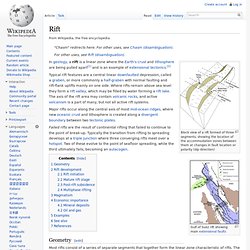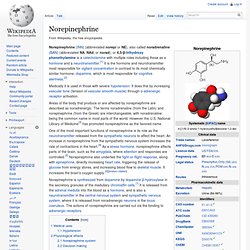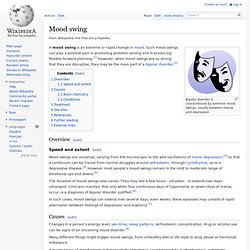

Hot spring. Definitions[edit] There is no universally accepted definition of a hot spring.

For example, one can find the phrase hot spring defined as a thermal spring with water warmer than 36.7 °C (98 °F)[5][6]a natural spring of water greater than 21.1 °C (70 °F) (synonymous with thermal spring)[7][8][9][10]a natural discharge of groundwater with elevated temperatures[11]a type of thermal spring in which hot water is brought to the surface. The water temperature of a hot spring is usually 6.5 °C (12 °F) or more above mean air temperature.[12] Note that by this definition, "thermal spring" is not synonymous with the term "hot spring"a spring whose hot water is brought to the surface (synonymous with a thermal spring). Sources of heat[edit] In active volcanic zones such as Yellowstone National Park, water may be heated by coming into contact with magma (molten rock). Note that hot springs in volcanic areas are often at or near the boiling point. Rift. Block view of a rift formed of three segments, showing the location of the accommodation zones between them at changes in fault location or polarity (dip direction) Major rifts occur along the central axis of most mid-ocean ridges, where new oceanic crust and lithosphere is created along a divergent boundary between two tectonic plates.

Geometry[edit] Most rifts consist of a series of separate segments that together form the linear zone characteristic of rifts. The individual rift segments have a dominantly half-graben geometry, controlled by a single basin-bounding fault. Segment lengths vary between rifts, depending on the elastic thickness of the lithosphere. Accommodation zones take various forms, from a simple relay ramp at the overlap between two major faults of the same polarity, to zones of high structural complexity, particularly where the segments have opposite polarity. Spring (hydrology)
Hephaestus. As a smithing god, Hephaestus made all the weapons of the gods in Olympus.

He served as the blacksmith of the gods, and was worshipped in the manufacturing and industrial centers of Greece, particularly Athens. The cult of Hephaestus was based in Lemnos.[2] Hephaestus' symbols are a smith's hammer, anvil, and a pair of tongs. Etymology[edit] Hephaestus, is probably associated with the Linear B (Mycenean Greek) inscription 𐀀𐀞𐀂𐀴𐀍, A-pa-i-ti-jo, found at Knossos; the inscription indirectly attests his worship at that time because it is believed that it reads the theophoric name Haphaistios or Haphaistion.[3][4][5] The name of the god in Greek (Hēphaistos), has a root which can be observed in names of places, of Pre-Greek origin.[6] Epithets[edit] Hephaestus is given many epithets.
Stoat. The stoat (Mustela erminea), also known as the short-tailed weasel, is a species of Mustelidae native to Eurasia and North America, distinguished from the least weasel by its larger size and longer tail with a prominent black tip.

The name ermine is often, but not always, used for the animal in its pure white winter coat, or the fur thereof.[2] Since the late 19th century, stoats have been introduced to New Zealand to control rabbits, but have had a devastating effect on native bird populations (see stoats in New Zealand). It is classed by the IUCN as Least Concern, due to its wide circumpolar distribution, and because it does not face any significant threat to its survival.[1] It was named one of the world's top 100 "worst invasive species" by the IUCN Species Survival Commission's Invasive Species Specialist Group.[3] Norepinephrine. Medically it is used in those with severe hypotension.

It does this by increasing vascular tone (tension of vascular smooth muscle) through α-adrenergic receptor activation. Areas of the body that produce or are affected by norepinephrine are described as noradrenergic. Mood swing. Bipolar disorder is characterized by extreme mood swings, usually between mania and depression Overview[edit] Speed and extent[edit] Mood swings are universal, varying from the microscopic to the wild oscillations of manic depression,[3] so that a continuum can be traced from normal struggles around self-esteem, through cyclothymia, up to a depressive disease.[4] However most people's mood swings remain in the mild to moderate range of emotional ups and downs.[5] The duration of mood swings also varies.

They may last a few hours - ultradian - or extend over days - ultrarapid: clinicians maintain that only when four continuous days of hypomania, or seven days of mania, occur, is a diagnosis of bipolar disorder justified.[6] In such cases, mood swings can extend over several days, even weeks: these episodes may consist of rapid alternation between feelings of depression and euphoria.[7]